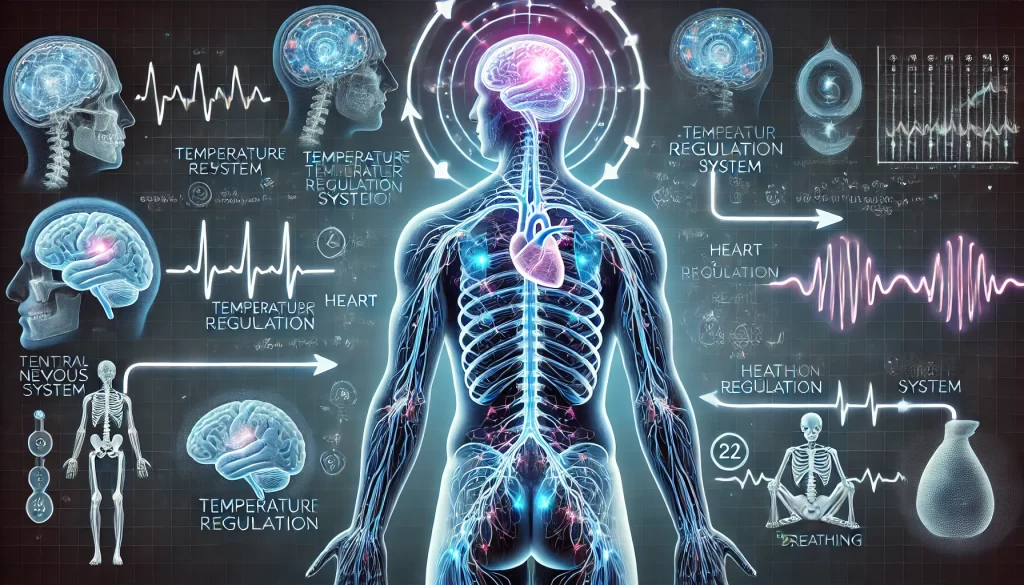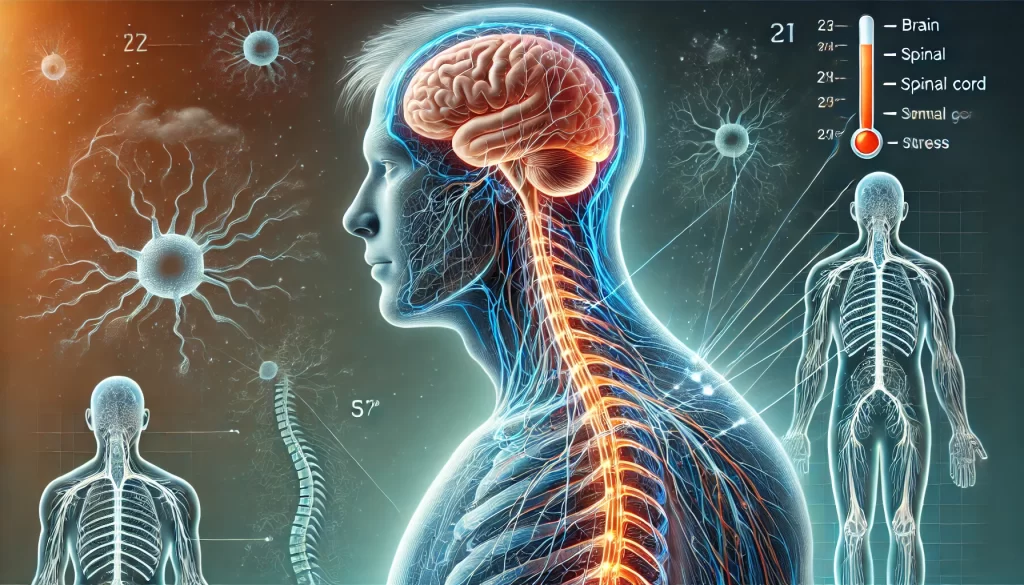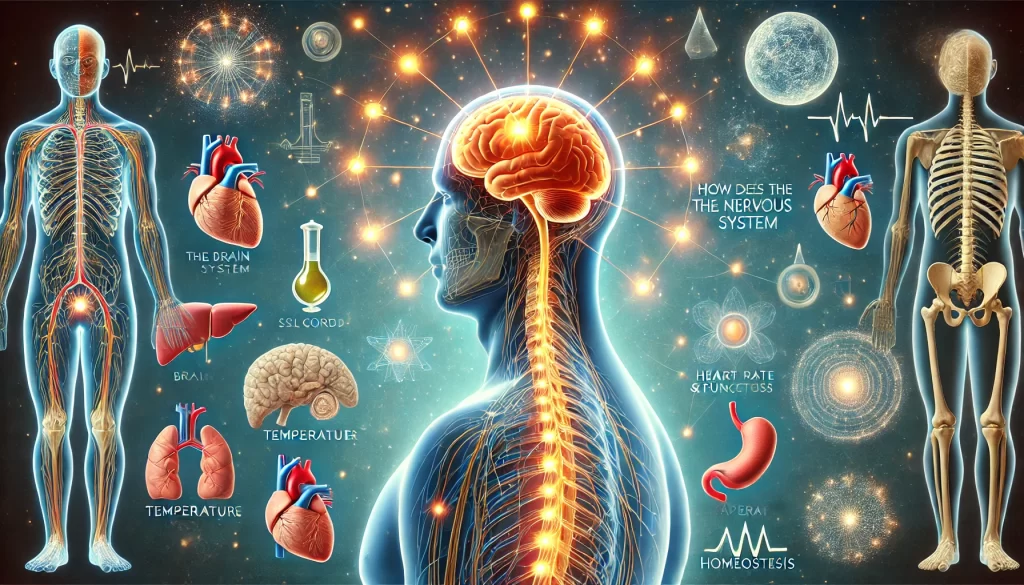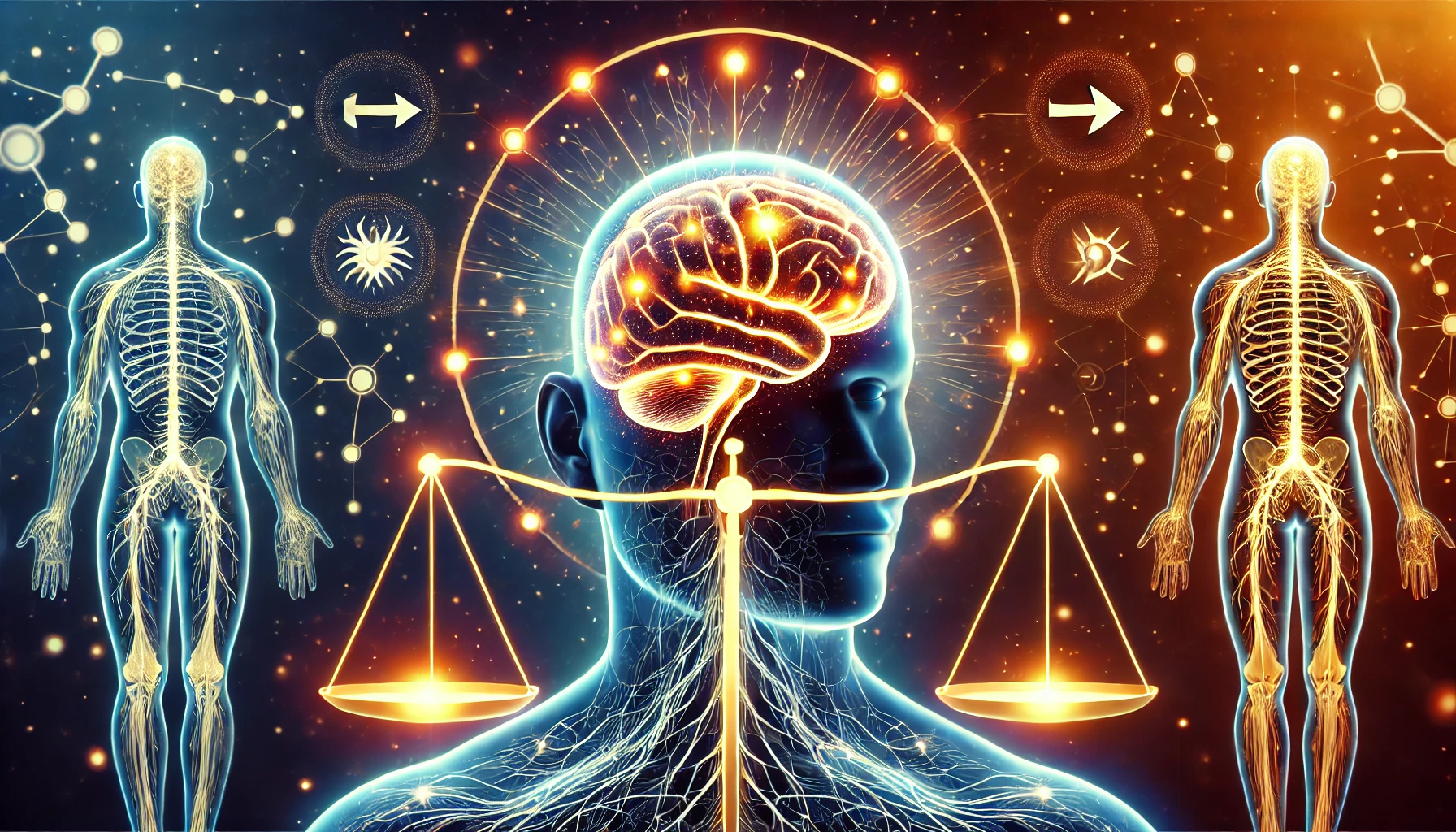Table of Contents
How does the nervous system maintain homeostasis? This question holds the key to understanding how our body stays balanced and healthy. Homeostasis is the body’s process of maintaining a stable internal environment, such as temperature, pH levels, and blood pressure. The nervous system plays a critical role in ensuring everything stays in balance. This article will uncover the secret behind how the nervous system maintains homeostasis and why it’s essential for our well-being.
What is Homeostasis?

Before exploring how does the nervous system maintain homeostasis, let’s first understand what homeostasis means. Simply put, homeostasis is the body’s ability to regulate its internal environment to keep conditions stable, regardless of external changes. For example, when exposed to cold weather, your body keeps your temperature within a narrow range.
The body relies on several systems to achieve this balance, with the nervous system being one of the most important. Essential bodily functions could break down without proper homeostasis, leading to illness or worse.
Key Elements of Homeostasis
- Temperature regulation: Keeping the body at an optimal temperature.
- Blood pressure control: Ensuring blood flows at the correct pressure.
- pH balance: Keeping the body’s acidity levels in check.
The Nervous System’s Function in Homeostasis

The nervous system plays a central role in regulating homeostasis by sending signals throughout the body to regulate various functions. But exactly how does the nervous system maintain homeostasis? It works closely with the endocrine system to monitor and respond to changes in the body’s internal and external environments.
How Does the Nervous System Detect Changes?
One essential function of the nervous system in maintaining homeostasis is its ability to detect changes inside and outside the body. The system uses special cells called receptors to gather information about temperature, light, and chemical levels.
Once the nervous system detects deviations from normal conditions, it sends signals to initiate a response. These signals are carried by neurons, which act as messengers to transmit information quickly and efficiently.
Fast Responses for Immediate Balance
The nervous system is responsible for quick responses to changes. For instance, when you touch something hot, your nervous system quickly detects the danger and sends signals to your muscles to pull your hand away. This immediate response is one example of how does the nervous system maintain homeostasis by protecting the body from harm.
Central Nervous System and Homeostasis

The Brain: The Control Center
The maintenance of homeostasis is greatly aided by the brain. As the control center of the nervous system, it receives messages from different parts of the body and processes them to decide how to respond. It then sends signals to organs, muscles, and glands to bring the body back to balance.
For example, if the brain detects that the body is overheating, it signals the sweat glands to release sweat, which cools the body down. The brain also controls breathing and heart rate, ensuring they adjust according to the body’s needs.
The Spinal Cord: The Body’s Highway
The spinal cord serves as the highway for signals between the brain and the rest of the body. It ensures that messages travel quickly and efficiently. In cases where the body needs to react immediately, like in reflex actions, the spinal cord can act independently, sending signals directly to muscles without waiting for instructions from the brain. This shows how does the nervous system maintain homeostasis even in critical situations.
The Autonomic Nervous System and Homeostasis
What is the Autonomic Nervous System?
The autonomic nervous system is critical to maintaining homeostasis. It controls involuntary bodily functions like heart rate, digestion, and breathing. This system has two main parts: the sympathetic and parasympathetic nervous systems, which work together to keep the body balanced.
Sympathetic Nervous System: The Stress Responder
The sympathetic nervous system springs into action when the body faces stress or danger. It speeds up the heart rate, increases blood flow to muscles, and releases adrenaline to prepare the body for a “fight or flight” response. While this response is necessary for survival, the body must return to balance, showing another aspect of how the nervous system maintains homeostasis.
Parasympathetic Nervous System: The Restorer of Calm
After the danger has passed, the parasympathetic nervous system takes over, helping the body return to rest. It slows the heart rate, decreases adrenaline production, and directs energy back to essential functions like digestion. This calming process is vital for how the nervous system maintains homeostasis after a stressful event.
How the Nervous System Maintains Homeostasis in Everyday Life
Temperature Regulation
Temperature control is one of the most important ways the nervous system maintains homeostasis. When the body becomes too hot, the brain signals the sweat glands to cool it. If the body becomes too cold, the brain tells the muscles to shiver, generating heat.
Blood Pressure Control
The nervous system also plays a significant role in keeping blood pressure healthy. If blood pressure drops, the brain signals the heart to pump more blood, and if it rises too high, the brain signals the heart to slow down. This constant regulation shows yet another way the nervous system maintains homeostasis.
Breathing Regulation
Breathing is another process regulated by the nervous system to maintain balance. The brain monitors the levels of oxygen and carbon dioxide in the blood. If carbon dioxide levels rise, the brain signals the lungs to breathe faster and remove the excess gas. This helps maintain the proper levels of gases in the blood, demonstrating how the nervous system maintains homeostasis.
Also Read: How Much Does Grifols Pay for Plasma? Shocking Rates Revealed!
What Happens When Homeostasis is Disrupted?
Sometimes, despite the nervous system’s efforts, homeostasis can be disrupted. Illnesses, injuries, or extreme environmental changes can overwhelm the system, leading to disorders such as dehydration, heatstroke, or hypothermia. These conditions highlight the importance of how the nervous system maintains homeostasis and why its failure can be dangerous.
How Can You Support Your Nervous System?
To support how the nervous system maintains homeostasis, it’s essential to stay healthy by:
- Eating a balanced diet: Proper nutrition supports nerve health.
- Exercising regularly: Physical activity helps maintain blood flow and oxygen levels.
- Getting enough sleep: Rest is essential for your nervous system to recover and repair.
How does the nervous system maintain homeostasis? It acts as the body’s control center, detecting changes and sending signals to keep everything balanced. From regulating temperature to controlling blood pressure and breathing, the nervous system ensures the body stays stable and healthy. Understanding this vital process highlights how crucial the nervous system is for our well-being. By taking care of your nervous system, you can help ensure that the nervous system maintains homeostasis and continues to function effectively, keeping your body in balance.

